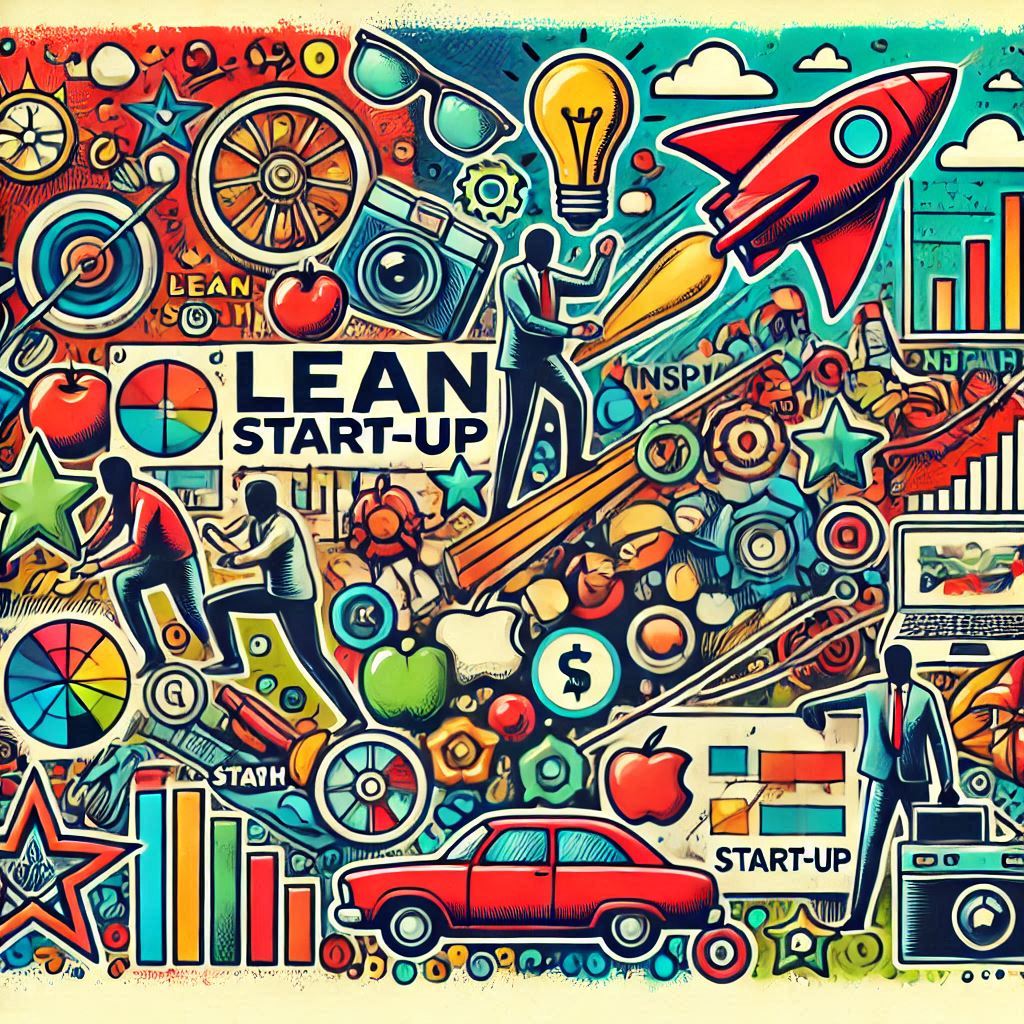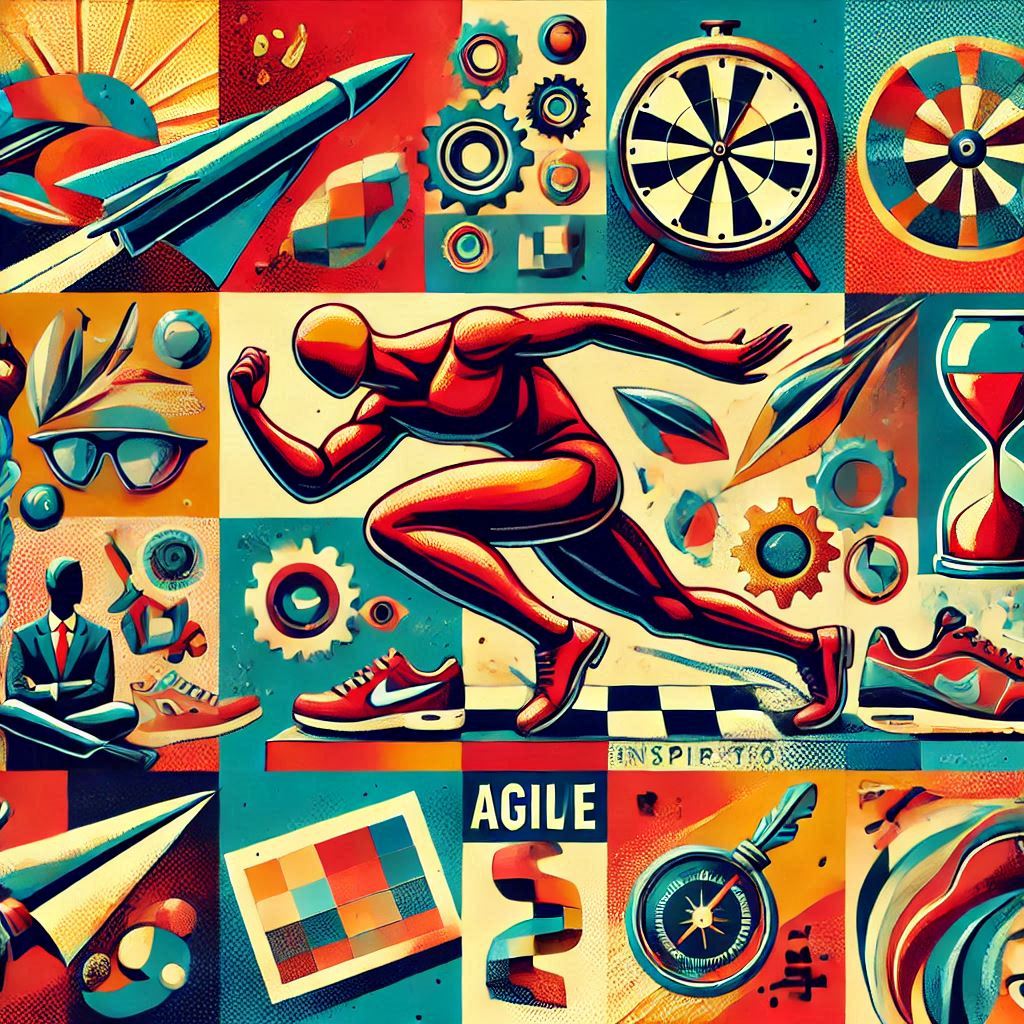Design thinking Vs. Lean start-up Vs. Agile
All of them are new terms used in management and business process, it could seem similar from outside point of view, in fact in the industry sometimes are misused or mixed in a wrong way, but as soon as you investigate in deep, you will find real insights that differentiate all these terms.
Commonly used among the techy community Google, Facebook, Airbnb, or Uber, right now, more than a trend, the whole industry is looking at these new ways to develop company processes, from the first customer insight to the final production.
Design Thinking is a way of problem-solving that contributes to solutions that people love. The certainty here is that you should always begin by building compassion with the individuals creating a product/service. We use design as a strategic tool to address significant societal challenges, drive growth and innovation, and improve the construction environment.
Lean Startup offers a scientific approach to creating and managing start-ups, enabling customers to get the desired product into their hands faster.
Lean Startup is present in new and well-established companies to help entrepreneurs and managers make better, faster business decisions. It provides a lean definition of a start-up: a temporary organization that seeks a repeatable and scalable business model.
Scrum or Agile is a project management framework that emphasizes teamwork, accountability, and pragmatic progress toward a well-defined objective. The frame begins with a simple assumption: What could be seen or known? Following that, monitor the progress and tweak as necessary. The three pillars of Scrum are transparency, inspection, and adaptation. She is also a product developer with a strong business and technical background and experience in developing, managing, and introducing software products.
Before implementing Agile, we will make presentations, organize dinner and educational sessions, talk to department managers and management staff, start our transformation team in scrumban mode in Kanban, and prominently place the information radiators in the office.
It is a methodology called “slimming start,” which is conducive to experimenting with extensive planning, customer feedback beyond intuition, and iterative design compared to a traditional “front-end” project.
Why are more and more successful organizations drawing inspiration from their innovation programs at Startup Eco-Systems?
Functional departments implement their model when switching from the start mode to business work, where the client’s development team looks for answers to questions.
Agile starts with an evaluation, aligning ourselves with value, improving workflow, training, and supervising Lean Kanban teams to achieve business results such as happier people, faster versions, and better quality.
Follow the same approach as described above with the primary stakeholders. Take time to have individual meetings with them before deciding on the future of rapid Agile transformation, sharing your beliefs, values, and priorities.
The goal of DevOps organizations (startups or Fortune 50) that take the initiative is to move quickly, implement quickly, and respond to changing business conditions.
Also, in almost every city worldwide, organizations such as Startup Weekend will simultaneously introduce the Lean method to hundreds of potential entrepreneurs.
It depends on how flexible the company is and what experience it has already had (e.g., if a team is experiencing periodic redundancies, people are afraid of change and need to be calmed down and strengthened, or if they have had a negative experience of agility and lean, people will be most active in resisting change).
If you work well with them, they can lead communities of practitioners and introduce new tools, techniques, and ideas for process optimization, or if you fail to work together, they can counteract agile transformation and kill it quickly.
Design thinking insights.

Thus, “design” can be a material reference to the categorical abstraction of a created or created thing (“design something”) or a verb for the creation process, which is apparent from the grammatical context.
Another definition of design is an action plan or a strategic approach that can achieve different expectations.
Design can be a strategic tool for addressing significant societal challenges, driving growth and innovation, and improving the construction environment.
It would be best to deal with all aspects of design, including products, services, user experience, and design in a building environment.
Working with organizations looking for opportunities for development, impact, and efficiency to design and build the next generation of products, services, and experiences.
Sprint is a five-day process of responding to business-critical questions by designing, prototyping, and testing ideas with customers.
Design thinking works with companies, universities, and education systems across the United States, helping us to research, design, and test our activities at every stage of the journey.
However, across corporate America and worldwide, enthusiasm for design thinking is growing, not only for developing products but also for steering strategy and shaping all kinds of decisions.
There is an enormous scarcity of valuable resources and practices for designers and students interested in minimizing product environmental impact.
Over the years, in his efforts to speed up software development and improve products, he has studied and taken over some design principles from people such as David Kelley, chairman of the global design firm IDEO and founder of the Stanford design program.
Although many design fields are categorized as horizontal between science, art, and the humanities, design can be seen as a unique way of understanding the world based on solution-oriented problem-solving, problem formation, synthesis, and suitability in the built environment.
Design thinking, as the ideal balance between covetousness, technical feasibility, and economic profitability, helps organizations become more innovative, better differentiate their brands, and market their products and services faster.
Project thinking in education usually takes three forms: helping school administrators solve institutional problems, assisting the teachers in creating more creative timetables, and involving students in project thinking.
Another more subtle hindrance to project thinking in schools is the academic community, which believes that design thinking should remain in the domain of avant-garde companies.
Lean Start-up basics.

The Lean Startup offers a scientific approach to creating and managing startups. It ensures that the desired product gets into the hands of the customer faster.
Steve Blank introduces the basic principles of the excellent Customer Development Process and gives insight into the most important steps to building a successful start-up.
Lean Startup is present in new and well-established companies to help entrepreneurs and managers make better, faster business decisions.
Traditionally, the project founders would develop a business plan, supplemented by a five-year projection, use it to raise money, and then go into a “hiding mode” to improve their offer, all without getting feedback from the people they intended to sell their products.
A lighter start will allow a prototype to be built quickly, put on the market to evaluate the product’s success without wasting unnecessary resources, and used to influence the next phase of construction using the data generated by the first marketing tests.
While the Business Model Generation used Skype and Apple’s methods to achieve product-market success, Lean Canvas focused on how the timeline affects a company’s sales.
However, thanks to the use of open source software, agile and iterative, lean startups can work with far less waste.
Without the involvement of universities in the new approach, teams working with Lean Startup methodology will be more often blocked by existing procedures and expectations. [7]
GE’s implementation reflects two of the five fundamental Startup Way principles: continuous innovation and a missing business function. [8]
Lean Startup, by introducing the principles of a slim production process and dynamic development into the innovation process, helps companies to succeed in a risky business environment. [9]
It is a methodology called “slimming start,” which is conducive to experimenting with extensive planning, customer feedback beyond intuition, and iterative design as compared to a traditional “front-end” project.
The unit of progress for lighter start-ups is validated learning, a rigorous method for demonstrating progress when rooted in extreme uncertainty.
Participants will be allowed to discuss some of the challenges posed by introducing lean business start-up practices in a company, and to explore the conditions for scaling and implementing new approaches in their own companies.
When you focus on determining the right thing to build—what customers want and pay for—you do not have to wait months for the beta product to change the direction of your business.
The essential task of starting up is transforming ideas into products, measuring customer responses, and learning whether they want to develop or persevere.
Switching from the boot mode from business work, where the client’s development team is looking for answers to questions, to functional departments implementing their model.
Also, in almost every city worldwide, organizations such as Startup Weekend will simultaneously introduce the Lean method to hundreds of potential entrepreneurs.
Agile tips and tricks

Read Futurice related article: Agile Tips and Tricks
The product owner should focus on the business development side of the product, spend most of his time in contact with stakeholders, and not decide how the team will achieve the technical solution.
All agile methods, including Scrum, emphasize teamwork, frequent software delivery, close cooperation with customers, and the ability to react quickly to changes.
Therefore, the fundamental question is becoming Kanban vs. Scrum: Which agile software development methodology is better suited to my situation?
Speed usually stabilizes in the short term and provides a strong basis for improving short—and long-term project planning accuracy and reliability.
A Scrum team usually consists of about seven people working together in sustainable sprints. The Product Owner (PO) is another role in developing Scrum software. The PO represents a company, customers, or users and leads the team to build the right product.
Introduction Scrum is a change for a team not used to agile software development: they have to start iterative work, build multifunctional teams, appoint a product owner and master of Scrum, and introduce regular meetings on iteration planning, daily status updates, and sprint reviews.
The advantages of the Scrum methodology are well understood: fewer additional specifications, fewer transfers by cross-functional teams, and more flexibility in roadmap planning through short sprints.
Whether you are a senior executive in charge of leading an Agile Transformation at the company level or a single delivery team looking for various learning and mastery options for Lean-Agile facilities such as Scrum and Kanban, we are ready to collaborate on your journey.
The most attractive and efficient way to create a product order book using the Scrum methodology is to fill it with user stories, which are brief descriptions of the features described from a user or customer’s point of view.
They are usually not taken into account – the objective of speed is relative consistency and predictability in all iterations regarding the ability of an efficient team to perform tasks.
If you compare the two agile methods of software development, it should be clearer what to introduce and when to do it. Scrum seems more appropriate if your company is stuck and needs a fundamental change to a more efficient process.
The Burndown charts show the amount of work remaining in the sprint or release and are a helpful tool in developing Scrum software to determine whether the sprint or release is on schedule so that all planned works are completed at the desired date.
The product owner is responsible for prioritizing the order book during Scrum development to ensure that it is up to the job since the system under construction, its users, team, and so on are learned.
When a team is asked to maximize speed, it can save a team on unity or acceptance tests, reduce collaboration with customers, skip bugs, refactor, or minimize many other significant benefits of the different flexible development practices.
After the sprint is delivered, the record work priorities are analyzed and changed, if necessary, and the next set of functions is selected for the next sprint.
At the end of a sprint, the increment shall be complete, as defined as a scrum of the fully functioning DoD team, and in useable condition regardless of whether the product’s owner decides to release it.
We suspect this will happen in the future because all high-performance teams of scrum teams are used to meeting in history to help keep their products in good condition.
Experience is the best teacher, and the scrum cycle aims to provide you with a wide range of feedback opportunities – from clients, teams, and the market – and to learn from them.

Vizologi is a revolutionary AI-generated business strategy tool that offers its users access to advanced features to create and refine start-up ideas quickly.
It generates limitless business ideas, gains insights on markets and competitors, and automates business plan creation.


